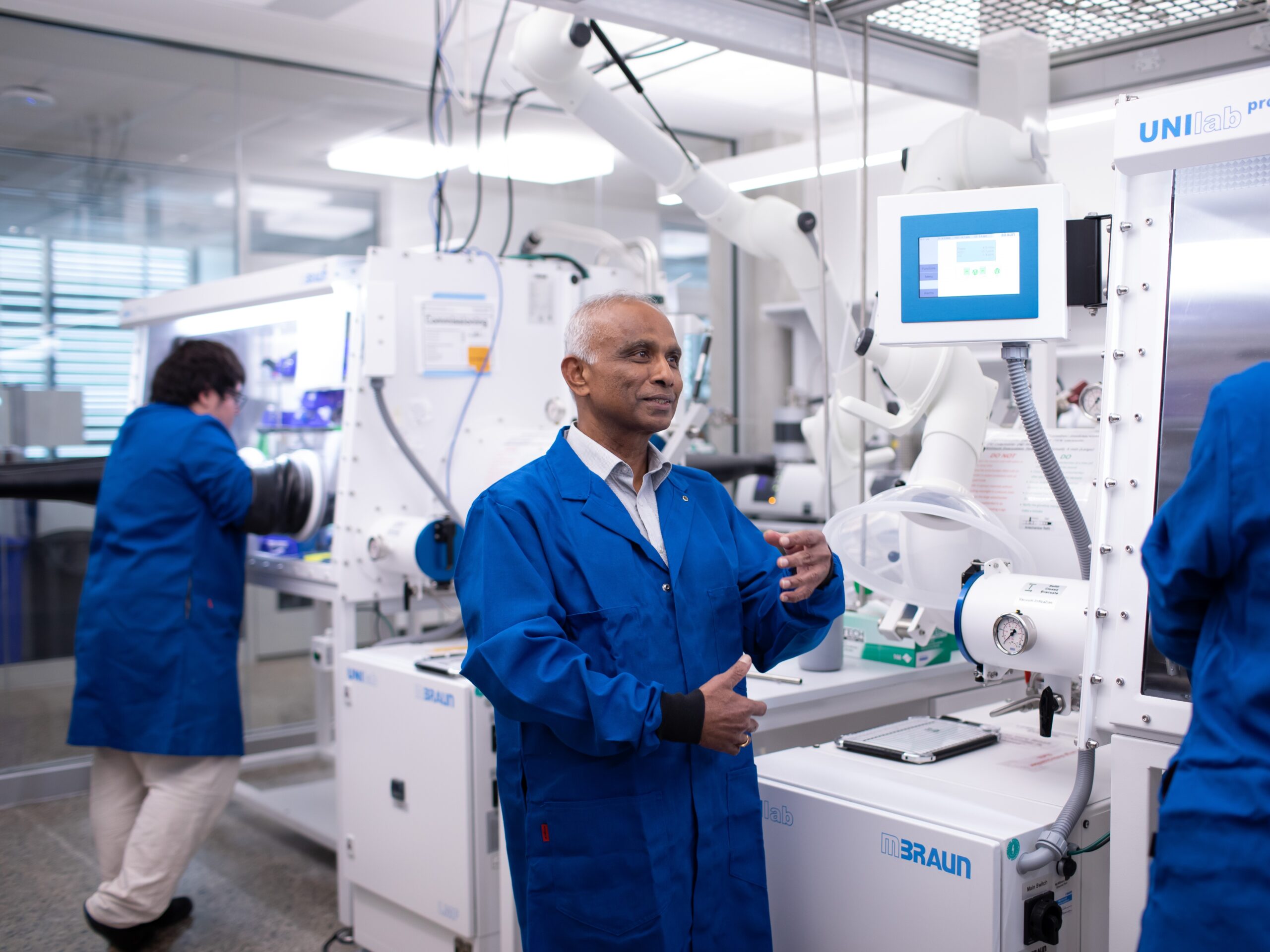
Battery experts at The University of Texas at Austin have shed new light on a critical issue facing battery components commonly used in electric vehicles.
Over time, particles that make up nickel-based cathodes in these batteries tend to crack, limiting the life cycle of the battery and raising safety issues. The prevailing theory saw this as an inevitable problem caused by the natural expansion and contraction of the particles that occurred during the battery’s natural process for delivering power.
“Our perspective educates the battery community to look at this problem with a different point of view that can provide us with an easier solution to prolong battery life.”
Arumugam ManthiramProfessor, Walker Department of Mechanical Engineering
But, in a new article published recently in Joule, the UT team found that unstable electrolytes – the material that serves as the transport medium for ions in the battery reaction – and their high level of reactivity with the cathode are the culprit of this phenomenon.
“We found that the electrolyte reacting with the cathode surface leads to the increased crack formation,” said Arumugam Manthiram, a professor in the Walker Department of Mechanical Engineering who led the research. “Unfortunately, the whole field has been misled, and we want to correct that misconception and show that we need to pay more attention to the electrolyte.”

Steven Lee, a graduate student in professor Arumugam Manthiram’s lab at UT.
Natural cracking happens when the particles “breathe” during the battery charge/discharge process, but this is reversible, the researchers say. The challenge comes when highly reactive electrolytes leak over time into these openings. That creates a reaction that takes away oxygen from the cathode and makes the cracks permanent.
The effect is similar to a flowing river that, over time, erodes the banks and rocks in its path.
As cracking increases, it speeds up how quickly a battery’s capacity fades. The researchers call cracking a symptom of the reactivity of the electrolyte on the cathode surface, rather than the main cause of capacity fade.
The biggest battery makers in the world and the global battery science community are all grappling with particle cracking problems. Many of the solutions out there today involve complex processes to completely modify the structure of the cathode.
“For the greater community, it is a lot more scalable to use better electrolytes than to rely on exotic structural modification methods that are not proven in a commercial sense,” said Steven Lee, a Ph.D. student in Manthiram’s lab. “Our perspective educates the battery community to look at this problem with a different point of view that can provide us with an easier solution to prolong battery life.”
The research was funded by the Assistant Secretary for Energy Efficiency and Renewable Energy, the U.S. Department of Energy’s Office of Vehicle Technologies Advanced Battery Materials Research Program and the Welch Foundation. Other team members on the project are Laisuo Su, Alex Mesnier, and Zehao Cui from the Materials Science and Engineering Program and the Texas Materials Institute at UT.
